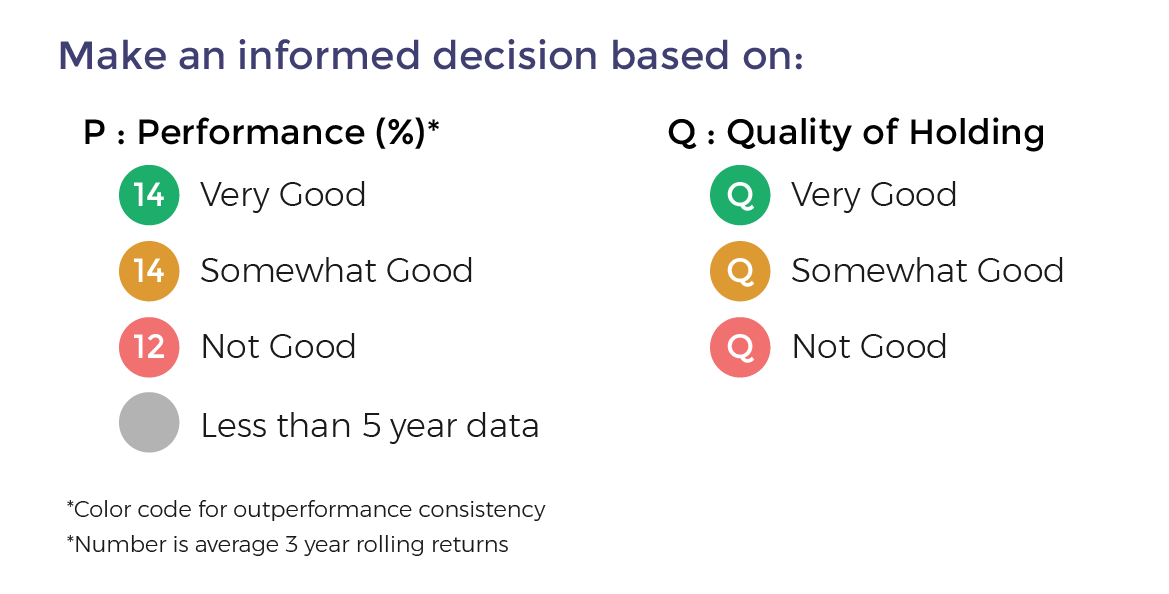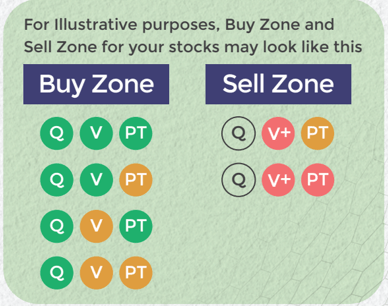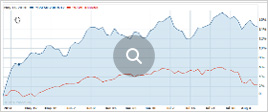Aadhar Housing Finance
- Aadhar Housing Finance is coming out with a 100% book building; initial public offering (IPO) of 10,00,19,373 shares of Rs 10 each in a price band Rs 300-315 per equity share.
- Not more than 50% of the issue will be allocated to Qualified Institutional Buyers (QIBs), including 5% to the mutual funds. Further, not less than 15% of the issue will be available for the non-institutional bidders and the remaining 35% for the retail investors.
- The issue will open for subscription on May 8, 2024 and will close on May 10, 2024.
- The shares will be listed on BSE as well as NSE.
- The face value of the share is Rs 10 and is priced 30 times of its face value on the lower side and 31.50 times on the higher side.
- Book running lead managers to the issue are ICICI Securities, Citigroup Global Markets India, Kotak Mahindra Capital Company, Nomura Financial Advisory and Securities (India) and SBI Capital Markets.
- Compliance Officer for the issue is Harshada Pathak.
Profile of the company
The company is a retail-focused HFC focused on the low income housing segment, serving economically weaker and low-to-middle income customers, who require small ticket mortgage loans. It offers a range of mortgage-related loan products, including loans for residential property purchase and construction; home improvement and extension loans; and loans for commercial property construction and acquisition. Its financial performance has remained consistent and resilient through various external events in the Indian economy. It has made social objectives one of the core objectives of its business model. It operates a financially inclusive, customer centric lending business and its business model contributes significantly to the economic uplift of its target customers by contributing to an improvement in their standard of living. In addition to its customer-facing social objectives, it has also implemented social objectives in aspects of its business. Its presence in urban and semi-urban locations across India provides a source of employment in these locations.
The company has robust and comprehensive systems and processes for underwriting, collections and monitoring asset quality. These systems and processes are also technology enabled across its front office and back office with a view to ultimately digitize the entire life cycle of a loan from origination to closure. Loan applications from salaried-customers go through its regional processing unit (RPUs), increasing efficiency while those from self-employed customers, which require close understanding of the customer and their cash flows, are managed regionally. It also has an internally developed credit assessment model and have digitized monthly collections from customers to the extent possible to reduce processing and improve collection efficiency. It has migrated to a digital IT infrastructure with a view to reducing costs, carrying on real time analysis of customer data, improving its control and underwriting functions, while increasing customer reach and distribution capability. These measures will further improve its operational efficiency by improving processing times and productivity. It secure financing from a variety of sources including term loans and cash credit/ working capital facilities, proceeds from loans assigned, proceeds from the issuance of NCDs, refinancing from the NHB and subordinated debt borrowings from banks, mutual funds, insurance companies and other domestic, development financial institutions to meet its capital requirements.
Proceed is being used for:
- Meeting future capital requirements towards onward lending.
- General corporate purposes.
Industry overview
As per household finance committee report issued by the RBI in 2017, the average Indian household holds 77% of its total asset in real estate which includes residential buildings, buildings used for farm and non-farm activities, constructions such as recreational facilities, and rural and urban land. Amongst the top states with high shortage of homes, some states such as Uttar Pradesh, Bihar, West Bengal, Rajasthan and Madhya Pradesh have a lower per capita income, as compared to the national average. This shows that there is significant headroom for growth in terms of increasing per capita income and reducing the housing shortage in India. The housing shortage in India has only increased since the estimates at the time of the twelfth five-year plan. As per the report of RBI-appointed Committee on the Development of housing finance securitization market (September 2019), the housing shortage in India was estimated to increase to 100 million units by 2022. Majority of the household shortage is for LIG and EWS with a small proportion of shortage (5-7%) of the shortage coming from MIG or above. Total incremental housing loans demand, if this entire shortage is to be addressed, is estimated to be in the region of Rs 50 trillion to Rs 60 trillion, as per the Committee report. In comparison, the overall housing loans outstanding (excluding Pradhan Mantri Awas Yojana (PMAY) loans) as of March 2023 was around Rs 31.1 trillion. This indicates the immense latent potential of the market, in case, a concrete action is taken for addressing the shortage of houses in India.
The mortgage-to-GDP ratio varies widely based on home loan market size, ranging between approximately 4% and approximately 42% in Fiscal 2023. Chandigarh has the highest housing loan penetration with approximately 41% of GDP followed by Maharashtra and Telangana at second and third position, respectively, in Fiscal 2023. Between 2017 and 2022, the per capital income of India has increased to $8,379, which is also one of the major reasons for rise in mortgage penetration in India. In Fiscal 2023, India's mortgage-to-GDP ratio stood at 12.3%. Though low compared with other developing countries, it has significantly improved from 6.5% in Fiscal 2009. The factors that contributed to the improvement are rising incomes, improving affordability, growing urbanization and nuclearization of families, emergence of tier-II and tier-III cities, ease of financing, tax incentives, and widening reach of financiers. The Indian housing finance market clocked a healthy approximately 14% CAGR (growth in loan outstanding - total housing loans on the books of all financiers put together) over Fiscals 2018-2023 on account of a rise in disposable income, healthy demand emanating from smaller cities markets, attractive interest rates and government impetus on housing.
Pros and strengths
HFC focused on the low-income housing segment in India: The company is a HFC focused on the low-income housing segment (ticket size less than Rs 1.5 million) in India and it had the highest AUM and net worth among its analyzed peers in Fiscal 2021, Fiscal 2022, Fiscal 2023 and nine months ended December 31, 2023. Its Gross AUM increased from Rs 133,271.0 million in FY2021 to Rs 147,777.9 million in FY2022 and Rs 172,228.3 million in FY2023. Due to its scale and diversified reach, it is well positioned to meet the specific needs of its target customers across geographies, in urban and semi-urban areas. Housing financiers focused on low income housing segment typically serve the underserved category of low-income or mid-income customers who may be salaried, working in the informal sector or self-employed running a small business. This presents a unique opportunity for it to leverage its position as the leading HFC focused on the low income housing segment in terms of AUM and net worth to be the lender of choice for customers from this segment. Further, the low income housing segment also benefits from various government and regulator initiatives to promote the construction of affordable housing projects as well as enabling financing for the customers of such projects.
Seasoned business model with strong resilience through business cycles: Through various business cycles, the company has been able to leverage the (i) inherent strength of its customer centric business model, (ii) its extensive branch and sales office network, and (iii) the expertise of its professional management team, to maintain its status as the HFC focused on the low income housing segment (ticket size less than Rs 1.5 million) in India with the highest AUM and net worth among its analyzed peers in Fiscal 2021, Fiscal 2022, Fiscal 2023 and nine months ended December 31, 2022 and December 31, 2023. Its financial performance has remained consistent and resilient through various external events in the Indian economy. Its overall growth, performance of its portfolio, asset quality and continued profitability during these periods despite these negative events demonstrates the strengths of its business and its management team. Its resilience in the low income housing segment is based on its customer centric business model, whereby it offer its products with practices and policies that are developed and implemented to address the specific issues faced in the low income housing segment and to address its customers' need to access funds, while ensuring robust credit, underwriting and collections policies. Its resilience in the low income housing segment is also based on its credit evaluation capabilities, which are distinguished by its credit underwriting, risk management and fraud detection teams that utilize an objective cognitive rule-based policy to make credit decisions and are supported by its internally developed a four-pronged credit assessment model.
Robust, comprehensive systems and processes for underwriting, collections and monitoring asset quality: The company has implemented a robust and comprehensive credit assessment, risk management and collections framework to identify, monitor and manage risks inherent in its operations. It exclusively finance retail customers, a majority of whom are salaried individuals purchasing residential properties. It has also adopted an internal 'risk appetite statement' that sets out the aggregate level and types of risk it is willing to accept while achieving its business objectives. Under this policy it has adopted a benchmark for business decisions that are based on balancing risk and return and making the best use of its capital. It routinely monitors its performance against various qualitative and quantitative metrics under this policy, these include capital, profitability, asset quality, credit, operational, liquidity and compliance risk. It has split its underwriting process such that underwriting for salaried customers is undertaken at its RPUs for quick turnaround and processing. For all other customer segments at the branch level it has specialized teams for credit underwriting, technical and legal due diligence and fraud control. It has an experienced team of credit managers across its branches to undertake credit assessment. Its well-defined systems and processes along with proper checks and balances enable credit approvals to be done by appropriate underwriting authority.
Access to diversified and cost-effective long-term financing: The company’s treasury department is responsible for ensuring that its capital requirements are met alongside asset liability management, managing the cost of its borrowings, liquidity management and control, diversifying fund raising sources, and investing surplus funds in accordance with the criteria set forth in its investment policy. Over the years, it has secured financing from a variety of sources including term loans; proceeds from loans assigned; proceeds from the issuance of NCDs; refinancing from the NHB; and subordinated debt borrowings from banks, mutual funds, insurance companies and other domestic and foreign financial and development finance institutions to meet its capital requirements. It assigns loans through direct assignment to banks and financial institutions, which enables it to optimize its cost of borrowings, funding and liquidity requirements, capital management and asset liability management.
Risks and concerns
Depend on accuracy and completeness of information provided by potential borrowers and third-party: In deciding whether to extend credit or enter into other transactions with potential borrowers, the company rely on information furnished to it by potential borrowers, and analysis of the information by independent valuers and advocates. To further verify the information provided by potential borrowers, it conducts searches on the CRIF High Mark Credit Information Services (CRIF), Credit Information Bureau (India) (CIBIL) and other credit bureaus for creditworthiness of its borrowers. It also verifies information with registrars and sub-registrars of assurances for encumbrances on collateral. It follows the know your customer (KYC) guidelines prescribed by the NHB and RBI on the potential borrower, verifies the place of business or place of employment as applicable to the potential borrower and also verifies the details with the caution list of the NHB as circulated from time to time. Such information includes representations with respect to the accuracy and completeness of information relating to the financial condition of potential borrowers, and independent valuation reports and title reports with respect to the property secured. Additionally, once a prospective borrower has submitted a completed loan application, its empaneled third-party agencies conduct various onsite checks to verify the prospective customer's work and home addresses.
Required to comply with regulations and guidelines issued by regulatory authorities in India: The company is regulated principally by and has reporting obligations to the NHB and the RBI. It is also subject to the corporate, taxation and other laws in effect in India. Its business and financial performance could be adversely affected by changes in the laws, rules, regulations or directions applicable to it and the housing finance business, or the interpretations of such existing laws, rules and regulations, or the promulgation of new laws, rules and regulations, including foreign investment laws governing its business, operations and investments in the company by non-residents. These regulations, apart from regulating the manner in which a company carries out its business and internal operations, prescribe various periodical compliances and filings, including but not limited to filing of forms and declarations with the relevant registrar of companies, the RBI and other relevant authorities. Further, notification of new regulations and policies, could require it to obtain approvals and licenses from the government and other regulatory bodies, or impose onerous requirements and conditions on its operations, in addition to those which it is undertaking currently, or change the manner in which it conducts KYC or authenticate its customers.
Subject to periodic inspections by the NHB: The company is subject to periodic inspection by the NHB, wherein its books of accounts and other records, including details of NPAs, grievance redressal mechanism, corporate governance and branches, among other, are inspected for the purpose of verifying the correctness or completeness of any statement, information or particulars furnished to the NHB. It is also required to submit the details of complaints received from its customers and details of frauds observed on a periodic basis to NHB. Further, the company had received show cause notices dated December 29, 2020 and February 26, 2021 for certain non-compliances with the Master Circular – Housing Finance Companies (NHB) Directions, 2010, which were responded to by the company on January 11, 2021 and March 5, 2021, respectively. While, the NHB has not levied any penalty for the above non-compliances nor have it received any further communication from NHB in relation to the above show cause notices and it has provided necessary clarifications and/ or undertaken to ensure compliance with the above observations, it cannot assure that such steps will be satisfactory and the NHB will not have further/ follow-on observations in the future or will not impose any penalties for non-compliances.
Rely significantly on information technology systems: The company’s ability to operate and remain competitive depends in part on its ability to maintain and upgrade its information technology systems and infrastructure on a timely and cost-effective basis, including its ability to process a large number of transactions on a daily basis. Its operations also rely on the secure processing, storage and transmission of confidential and other information in its computer systems and networks. Its financial, accounting and other data processing systems, management information systems and its corporate website may fail to operate adequately or become disabled as a result of events beyond its control, including a disruption of electrical or communications services. It may also face risks relating to its digital transformation program, including implementing its initiatives such as AHFL Connect, AHF mobile app and services from other external IT service providers and migrating to its Tata Consultancy Services (TCS) platform in FY2020 which subsequently became operational in October 2021. As it implemented the TCS platform concurrently across all its branches, there was some disruption in disbursement numbers in October and November 2021 due to the learning curve associated with the adoption of a new technological system, which have settled down since mid-November 2021.
Outlook
Aadhar Housing Finance is one of the largest low-income housing finance companies in India servicing the home financing needs of the low income sections of the society. It endeavours to empower underserved millions to own their first homes. It offers a range of mortgage-related loan products, including loans for residential property purchase and construction; home improvement and extension loans; and loans for commercial property construction and acquisition. Company's financial performance has remained consistent and resilient through various external events in the Indian economy. At Aadhar, it facilitates financial inclusion by enabling wider access to housing finance, ethically and responsibly. Its financing process is simple, transparent and speedy. Committed to the highest standards of ethical behaviour and professionalism, it is empowering Bharat to gain enhanced financial capabilities. On the concern side, reputational risk arising from negative publicity is inherent in its business. Negative publicity may include public opinion about the banking and financial services industry generally or about it specifically, which could materially adversely affect its ability to attract and retain customers and may expose it to litigation and regulatory action.
The company is coming out with an IPO of 10,00,19,373 equity shares of face value of Rs 10 each. The issue has been offered in a price band of Rs 300-315 per equity share. The aggregate size of the offer is around Rs 3000.58 crore to Rs 3150.61 crore based on lower and upper price band respectively. On performance front, the company’s total income increased by 18.2% to Rs 20,435.2 million for FY2023 from Rs 17,285.6 million for FY2022. The company’s profit for the period increased by 22.5% to Rs 5,447.6 million for FY2023 from Rs 4,448.5 million for FY2022. Meanwhile, The company intends to continue to diversify its funding sources, identify new sources and pools of capital and implement robust asset liability management policies with the aim of further optimizing its borrowing costs and help sustain its NIM. In line with its strategy, it has increased the share of NHB refinancing in its Total Borrowings and have also availed international sources of funding in the past to reduce its overall cost of borrowings and diversify the funding mix. It intends to continue maintaining a healthy mix of NHB refinance in its Total Borrowings and expanding its lender base.































